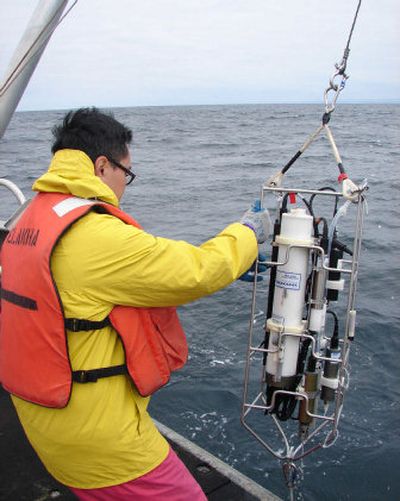Worse-than-usual ocean dead zone dissipates

GRANTS PASS, Ore. – An ocean dead zone off Oregon that killed fish, crabs and sea worms in an area bigger than Rhode Island last summer lasted nearly three times longer than any of its predecessors before dissipating with autumn’s change in the weather, scientists said Monday.
This year’s dead zone off Oregon lasted 17 weeks compared with the previous high of six weeks in 2004. Oxygen readings plummeted to near zero, leaving the ocean bottom littered with dead crabs, sea stars and sea anemones.
This was the fifth straight year the dead zone has occurred, this time covering 70 miles of the central Oregon coast. There are indications a dead zone also formed off southern Washington.
In recent weeks, southerly winds have flushed out the oxygen-depleted waters that were stuck along the continental shelf off the central Oregon coast, putting an end to the condition known as “ocean upwelling” that triggered the dead zone, said Jack Barth, professor of physical oceanography at Oregon State University.
“The fact that we’ve seen five in five years now and this one in 2006 was the most devastating does not bode well for the future,” said Jane Lubchenco, a professor of marine biology at OSU. “We’re seeing a system that is acting very sporadically. It’s changing in ways we haven’t seen before – or at least we haven’t documented before. We can trace all those changes to changes in the winds.”
Strong northerly winds drive the upwelling phenomenon, which turns over the waters on the continental shelf, bringing nutrients from the bottom to the top and feeding an explosion of tiny organisms at the bottom of the food web known as phytoplankton. When the phytoplankton die, they sink to the bottom, where they are consumed by bacteria, using up all the oxygen.
The northerly winds that produce strong upwelling were twice as prevalent this summer as normal – consistent with global warming, said Barth.